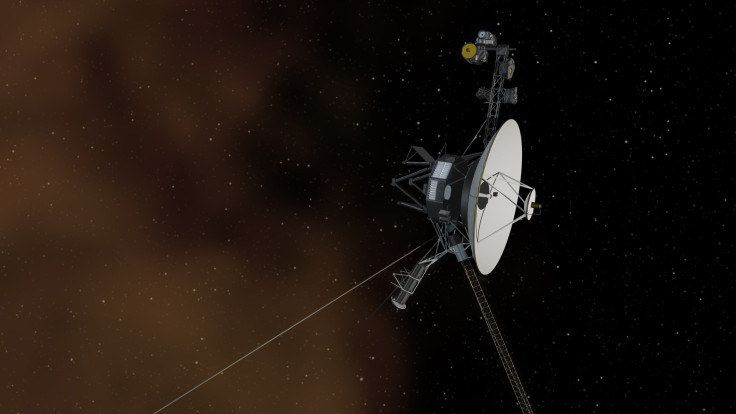Over 14 Billion Miles Away, Voyager 1 Detects Eerie 'Hum' In Interstellar Space
KEY POINTS
- Voyager 1 is the first man-made object to reach interstellar space
- It captured the eerie "hum" of interstellar space over 14.1 billion miles away
- Data from Voyager 1 can help measure the interstellar medium's density
It has been decades since NASA's Voyager 1 spacecraft was launched but it continues to provide incredible data. In a new study, published in Nature Astronomy, researchers report the spacecraft's constant detection of the interstellar medium's "hum."
People might think of the interstellar medium as a silent and calm area, but it actually has a lot of "turbulent waves," and Voyager 1 is equipped with antennas that can capture this "noise," NASA said in a news release. Launched in 1977, Voyager 1 crossed the boundary of the solar system's heliosphere in 2012 and became the first man-made object to enter interstellar space.
It heard interstellar sounds in November of 2012, just a few months after it left our heliosphere, and captured "whistles" caused by eruptions from the sun. It happened again about six months later in 2013.
In an audio clip shared by NASA's Jet Propulsion Laboratory (JPL) on Twitter, one can hear the eerie interstellar plasma sounds captured by the spacecraft.
Making waves. @NASAVoyager is the 1st to enter & measure interstellar space. This audio (taken in 2013) first gave insight into the frontier. Recent data offers a way to measure density & explore the interstellar medium's structure. https://t.co/mQHwGQ2WXZhttps://t.co/hIiOsLB174
— NASA JPL (@NASAJPL) May 11, 2021
Although whistles such as the one it detected earlier can contribute to the study of the interstellar medium's density, one would need a lot of patience when depending on data derived from these sounds.
"They've only been seen about once a year, so relying on these kind [sic] of fortuitous events meant that our map of the density of interstellar space was kind of sparse," study co-author Stella Koch Ocker, a Ph.D. student at Cornell University, said in the NASA news release.
But by scouring Voyager 1 data, the researchers found "weak but consistent" signals that persisted starting from 2017, about the same time that another whistle was detected.
"We're detecting the faint, persistent hum of interstellar gas," Ocker said in the Cornell University news release.
The signal appears to be tracking the density of interstellar space, NASA said.
"The emission's persistence suggests that Voyager 1 may be able to continue tracking the interstellar plasma density in the absence of shock-generated plasma oscillation events," the researchers wrote.
Simply put, scientists were able to measure the interstellar medium density without having to wait for turbulent events from the sun.
Voyager 1 is the farthest human-made object in space.
— NASA Goddard (@NASAGoddard) May 11, 2021
It detected a “hum” over 14.1 billion miles from Earth. Its tune may tell scientists about the density of the stuff between the stars.
Learn more about the discovery: https://t.co/3tv64KtdDE pic.twitter.com/7jJRUq0MlD
"We've never had a chance to evaluate it. Now we know we don't need a fortuitous event related to the sun to measure interstellar plasma," study co-author Shami Chatterjee, also from Cornell University, said in the university news release. "Regardless of what the sun is doing, Voyager is sending back detail. The craft is saying, 'Here's the density I'm swimming through right now. And here it is now. And here it is now. And here it is now.' Voyager is quite distant and will be doing this continuously."
For now, Voyager is still likely capturing signals from our heliosphere, but it will one day be able to detect purer signals from interstellar space, NASA said. The agency describes the interstellar medium as "the stuff between the stars."
"We have some ideas about how far Voyager will need to get to start seeing more pure interstellar waters, so to speak," Ocker said, as per the NASA news release. "But we're not entirely sure when we'll reach that point."

© Copyright IBTimes 2024. All rights reserved.





















